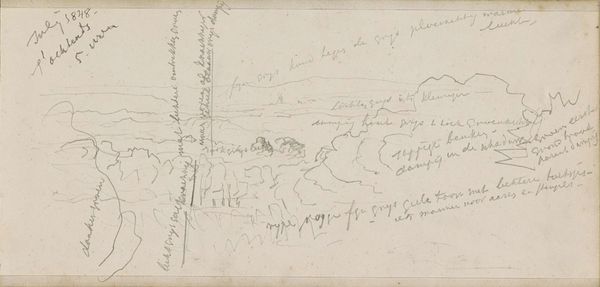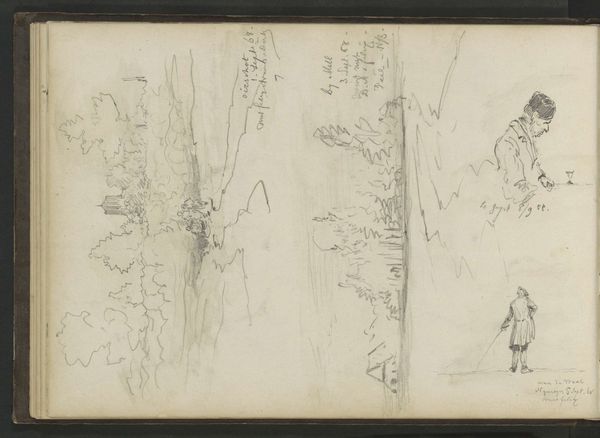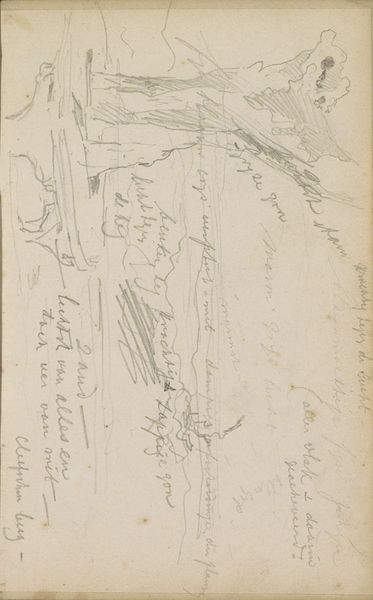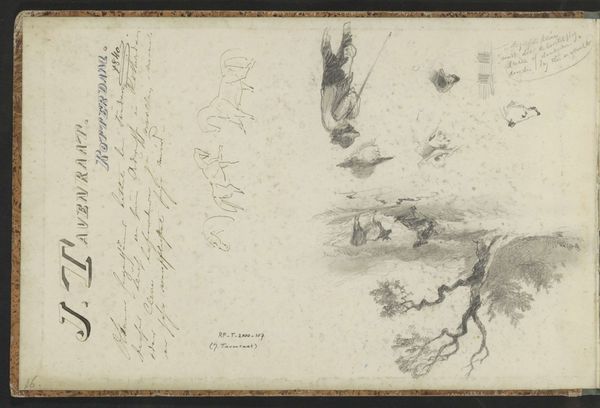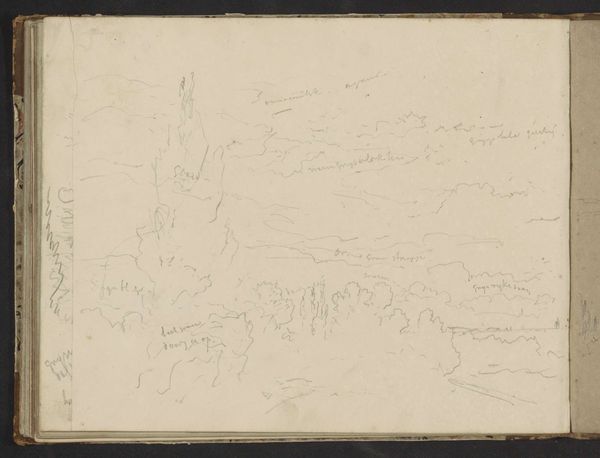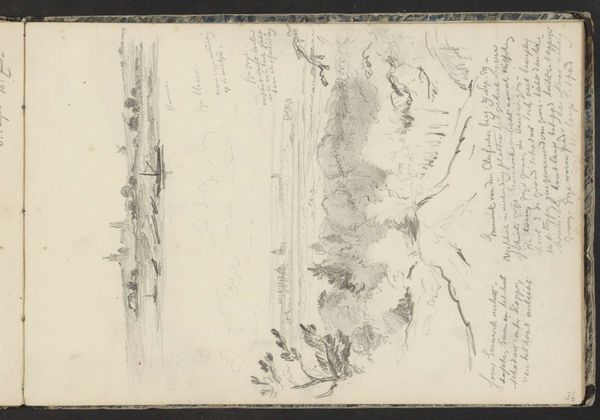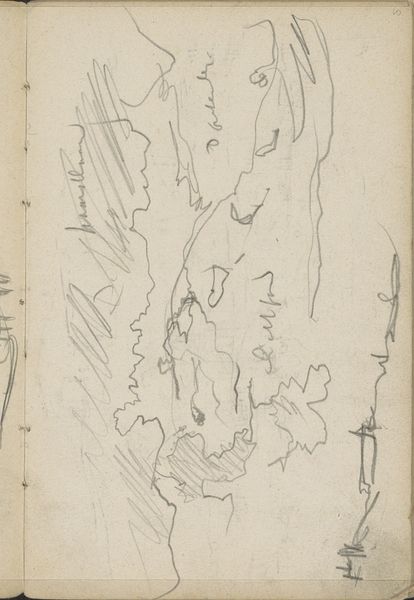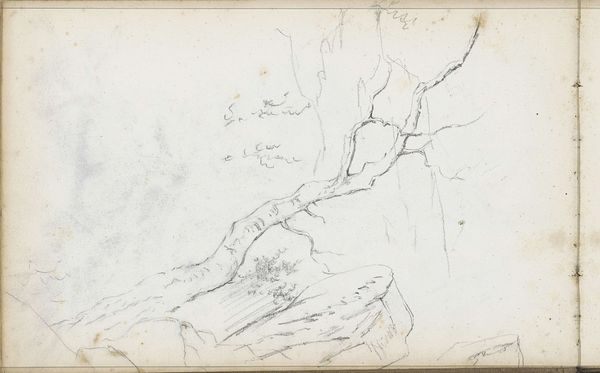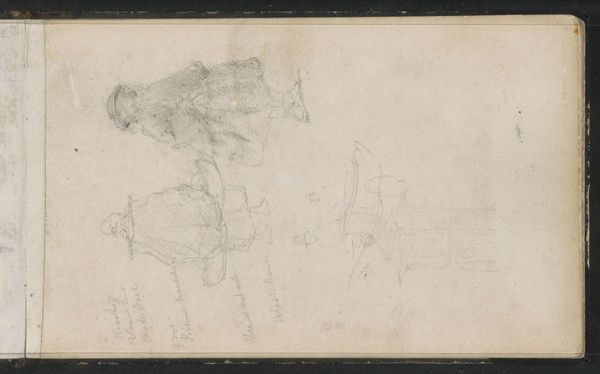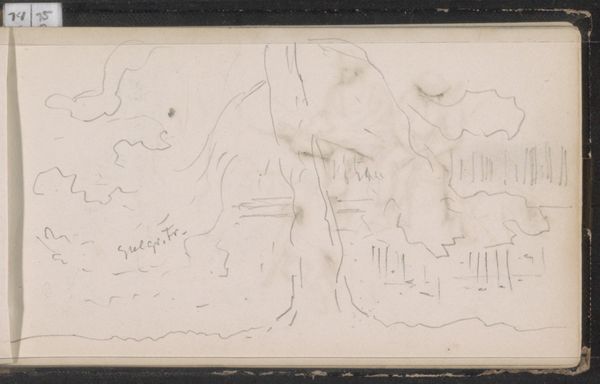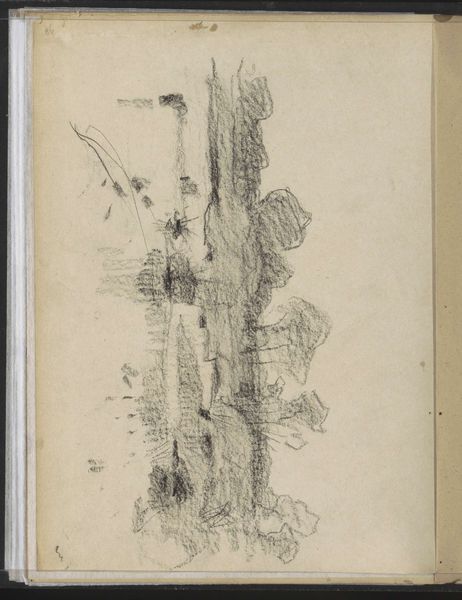
Weidelandschappen met koeien, een boerderij en een kerktoren 1840
0:00
0:00
johannestavenraat
Rijksmuseum
drawing, pencil
#
drawing
#
landscape
#
romanticism
#
pencil
Copyright: Rijks Museum: Open Domain
Editor: This drawing, "Weidelandschappen met koeien, een boerderij en een kerktoren," or "Pasture Landscape with Cows, a Farm, and a Church Tower," was created around 1840 by Johannes Tavenraat. It's a pencil drawing, and what strikes me is how unfinished and spontaneous it feels, despite its intricate details. What stands out to you about it? Curator: What I see foremost is the artist's emphasis on line and form. Observe how Tavenraat uses the pencil to create varying densities, from the barely-there strokes suggesting distant fields to the more assertive lines defining the farmhouse. Notice the interplay of horizontal and vertical lines, creating a structured, yet natural, space. How do you interpret the composition? Editor: I find it interesting that there are at least three different scenes or fields shown with only slight connection between them; they all look like preliminary sketches on one page. There isn't any particular center to this landscape. It is an asymetrical and almost chaotic placement of the image. Curator: Precisely. Consider then, how Tavenraat eschews a traditional vanishing point, opting instead for a fragmented perspective. Each element – the cows, the farmhouse, the distant church tower – exists in its own distinct space, yet contributes to the overall textural richness. Note the deliberate use of negative space, especially in the upper portion, contributing to a sense of openness and tranquility. Is the Romanticism label misplaced here, do you think? Editor: Well, maybe it is accurate to label this work "Romanticism", even though I tend to expect much bolder emotional content or drama to categorize a piece as belonging to the "Romantic" era. Is the lack of heavy strokes perhaps indicative of the artist finding freedom and peace in the scene? Curator: An interesting point. Perhaps it reflects a shift away from overt sentimentality towards a more nuanced engagement with the natural world, focusing instead on the intrinsic formal properties of the landscape itself. Editor: This conversation made me consider the importance of not getting too bogged down with finding the correct style or era for a given piece and reminded me that it is just as important to analyze its composition on its own merit. Curator: Indeed, a detailed examination of the forms and shapes allow us to understand more thoroughly how a piece such as this communicates, even when divorced from its historical context.
Comments
No comments
Be the first to comment and join the conversation on the ultimate creative platform.
